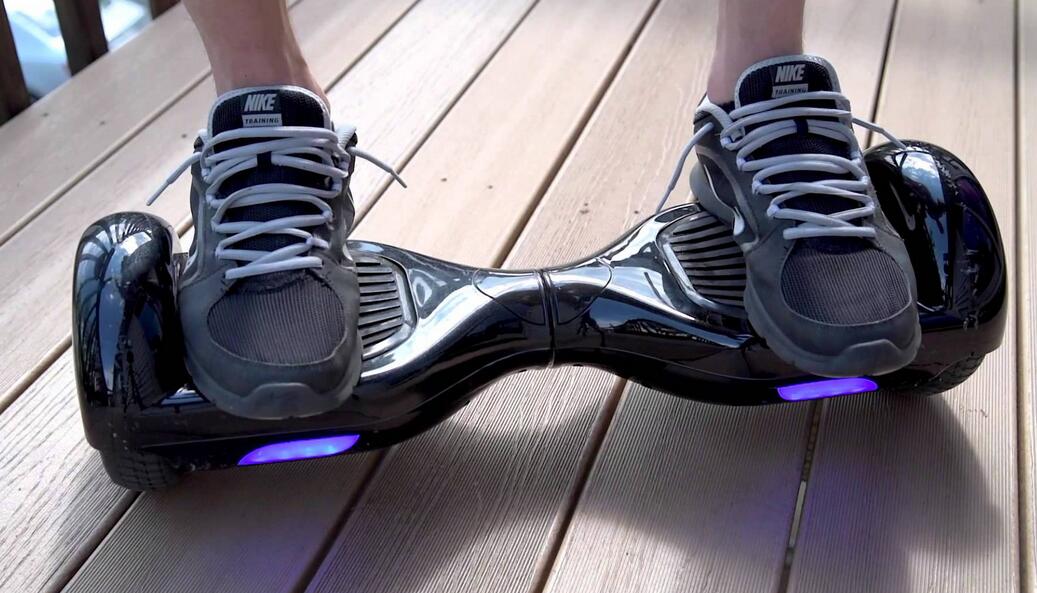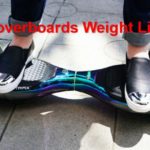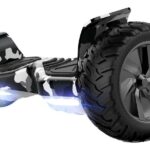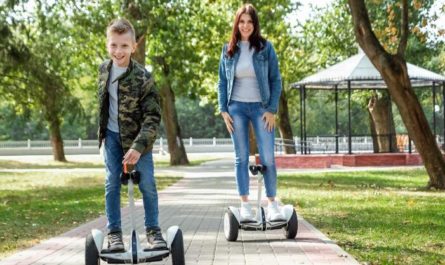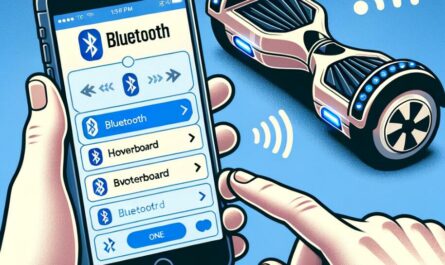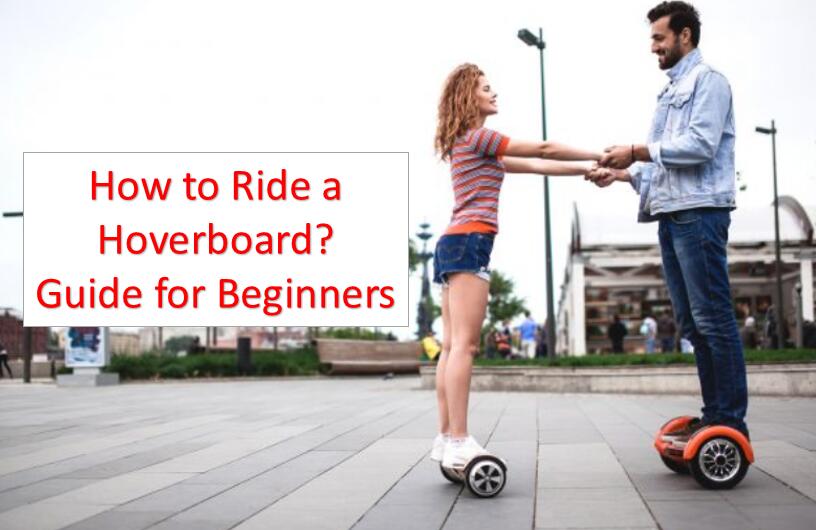Hoverboards have swiftly become a popular mode of transportation and fun for people of all ages. However, as with any personal vehicle, selecting the right hoverboard size is crucial for both safety and enjoyment. This article will delve into every aspect of hoverboard sizes, from the wheel diameter to the weight limits, ensuring you make an informed choice.
Table of Contents
What Are Hoverboards and Why Size Matters?
A hoverboard is essentially a self-balancing scooter powered by rechargeable batteries. It consists of two motorized wheels connected by a platform on which the rider stands. The size of a hoverboard can influence a multitude of factors such as ease of transport, maneuverability, and the ability to tackle certain types of terrain.
- Ease of Transport: Larger hoverboards tend to offer a more stable ride, but they can be heavier to carry around. If you plan to frequently transport your hoverboard, a smaller and lighter option might be more suitable.
- Maneuverability: Smaller hoverboards may be easier to maneuver, especially for younger riders or those with smaller frames. They allow for quick turns and agile movements, making them ideal for navigating crowded areas.
- Terrain: If you’re planning to ride over rough surfaces, a hoverboard with larger wheels will be more adept at handling the bumps. The increased wheel size provides better traction and stability, allowing you to confidently ride on uneven terrains.
The Standard Hoverboard Size Chart
When discussing hoverboard sizes, the chart below outlines the most common dimensions:
| Wheel Diameter | Board Length | Board Width | Approximate Weight |
|---|---|---|---|
| 6.5 inches | 23 inches | 7.3 inches | 22 pounds |
| 8 inches | 24 inches | 7.5 inches | 25 pounds |
| 10 inches | 25.5 inches | 9.5 inches | 28 pounds |
These measurements are approximate and can vary between manufacturers, but they give you a general idea of what to expect.
Hoverboard Size by Wheel Diameter
One of the primary considerations when selecting a hoverboard is the size of its wheels. The wheel diameter directly affects the stability, maneuverability, and adaptability of the hoverboard to different terrains.
- 6.5 inches: Ideal for indoor use or smooth surfaces; offers a balance between portability and stability. These smaller wheels make the hoverboard lighter and more agile, allowing for quick movements and easy maneuvering in tight spaces.
- 8 inches: A step up from the 6.5-inch wheel size, 8-inch hoverboards provide a smoother ride on various surfaces without being too bulky. They strike a good balance between maneuverability and stability. This makes them suitable for both indoor and outdoor use.
- 10 inches: Best for outdoor use on rougher terrain; larger wheels offer enhanced stability and comfort. These hoverboards are designed to tackle uneven surfaces, such as gravel paths or grassy areas, with ease. The larger wheels provide better shock absorption and a smoother ride over bumps and cracks.
Each wheel size has its own set of advantages and drawbacks. Smaller wheels make the board lighter and more agile, while larger ones increase stability and ease of handling over uneven ground.
Selecting the Right Hoverboard Size for Different Age Groups
Hoverboard sizes can also be tied to the age and size of the rider. It’s important to choose a hoverboard that is suitable for the rider’s weight and physical capabilities to ensure a safe and enjoyable experience.
- Kids: Smaller hoverboards with 6.5-inch wheels are usually sufficient and easier to control. They provide a safer and more enjoyable riding experience for children. This allows them to develop their balance and coordination skills under adult supervision.
- Teenagers: Teenagers might opt for hoverboards with 8-inch wheels for a combination of maneuverability and versatility. The slightly larger size offers more stability and allows for a smoother ride, accommodating the growing bodies and skills of teenage riders.
- Adults: Adults often require hoverboards with 8-inch to 10-inch wheels to ensure the board can support their weight and provide a comfortable ride. Larger hoverboards offer increased stability and better weight distribution, allowing adults to ride with confidence.
Hoverboard Size and Weight Limitations
Each hoverboard comes with a recommended weight limit, which is essential for the safety and longevity of the device. Exceeding the weight limit can strain the motor and components, leading to reduced performance and potential damage.
Generally, a 6.5-inch hoverboard can support up to 220 pounds, while an 8-inch or 10-inch model may support up to 265 pounds or more. It is crucial to adhere to these weight limits to prevent damage to the hoverboard and ensure a safe riding experience.
If you are close to the weight limit, consider opting for a hoverboard with a higher weight capacity to ensure optimal performance and longevity.
Hoverboard Size and Riding Environment
Your environment plays a significant role in the size selection of your hoverboard. Different wheel sizes and hoverboard dimensions are suited for specific riding environments.
- Parks and Sidewalks: A standard 6.5-inch or 8-inch hoverboard is typically sufficient for riding in parks and on sidewalks. These sizes offer a good balance between maneuverability and stability, allowing you to navigate through crowds or narrow pathways with ease. Smaller wheel sizes are more agile and better suited for tight spaces.
- Rough Terrains: Consider a 10-inch hoverboard with a robust tire tread pattern for better grip and control. The larger wheels and enhanced stability make it suitable for off-road adventures and riding on uneven surfaces such as grass, gravel, or dirt paths. The increased ground clearance and sturdy construction of these hoverboards enable a smoother ride over rough terrains.
When selecting a hoverboard, take into account the primary environments where you will be riding to ensure that the size and capabilities of the hoverboard align with your intended use.
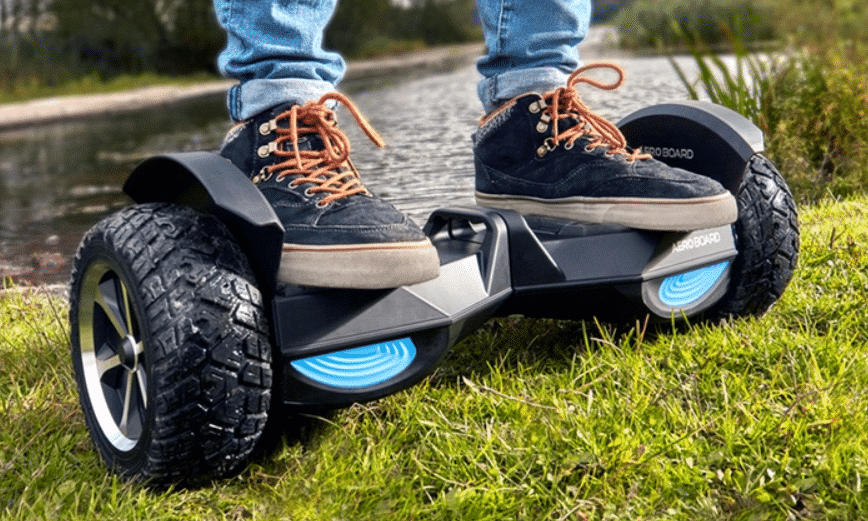
How to Measure for the Perfect Hoverboard Fit?
To measure for a hoverboard:
- Consider the rider’s height and weight. These factors play a crucial role in determining the appropriate hoverboard size.
- Match these measurements against the hoverboard size chart provided earlier. This will give you a starting point in terms of wheel diameter, board length, and board width.
- If possible, physically stand on a hoverboard to test the fit, ensuring feet comfortably rest on the platform. It’s important to have enough space for your feet to maintain balance and control while riding.
Measuring for the perfect hoverboard fit ensures that you choose a board that accommodates your body size and provides the necessary stability and comfort.
The Role of Foot Platform Size in Hoverboard Selection
The size of the foot platform is critical as it impacts the rider’s balance and comfort. A platform that is too small can make the rider feel unstable, while one that is too large may be unwieldy. When selecting a hoverboard, ensure that the foot platform provides ample space for your feet to stand comfortably and maintain proper balance throughout the ride.
By matching the hoverboard’s foot platform size to your shoe size and considering your individual comfort preferences, you can ensure a better riding experience.
Customization and Hoverboard Sizes
Some retailers offer customization options for hoverboards, allowing you to personalize the appearance of your board with different colors, patterns, or decals. While this can be an attractive feature, it’s important to ensure that any customizations do not alter the fundamental size and weight limits of the board.
Modifications that compromise the structural integrity of the hoverboard or exceed weight limitations can impact performance and safety. If you opt for customization, ensure that it is done by a reputable source and does not compromise the safety or functionality of the hoverboard.
Safety Gear and Hoverboard Size Compatibility
Safety gear should always be used in conjunction with hoverboards to protect yourself from potential injuries. While the size of your hoverboard might not directly impact the type of safety gear required, it’s important to consider the riding environment and your level of experience when choosing appropriate safety gear.
- Helmet: A helmet is essential for all riders, regardless of hoverboard size. It protects your head from potential impact and reduces the risk of head injuries. Look for a helmet that fits securely and has appropriate safety certifications.
- Knee and Elbow Pads: Knee and elbow pads are advisable, especially for children or novice riders. They provide extra protection for these vulnerable joints in case of a fall or collision. Look for pads that are comfortable, durable, and provide adequate cushioning.
The size of your hoverboard might influence the type of protective gear you need. For example, if you plan to ride off-road or on rough terrains with a larger hoverboard, you may want to invest in more robust knee and elbow pads that offer additional padding and protection.
Maintenance and Storage: Does Size Matter?
When it comes to maintenance and storage, the size of your hoverboard will dictate how and where you can keep it. Consider the following points:
- Cleaning and Maintenance: Smaller hoverboards are generally easier to clean and maintain due to their compact size. Cleaning the wheels, platform, and other components is more manageable. Larger hoverboards may require more effort and attention to detail when cleaning or performing maintenance tasks such as replacing tires or batteries.
- Storage Space: Smaller hoverboards are more space-efficient and can be stored in smaller areas such as closets or under beds. On the other hand, larger hoverboards may require more storage space, making them better suited for garages or dedicated storage areas.
Regardless of the size of your hoverboard, regular maintenance such as tire pressure checks, battery charging, and cleaning will help extend its lifespan and ensure optimal performance.
Price Considerations for Different Hoverboard Sizes
In general, larger hoverboards with more features tend to be more expensive. However, the price can also be influenced by brand, quality, and additional features such as Bluetooth connectivity or LED lights. When considering price, it’s important to strike a balance between your budget and the features and size that best fit your requirements.
Investing in a high-quality hoverboard from a reputable brand can provide a better riding experience, durability, and customer support. Look for hoverboards that offer value for money and meet your specific size and feature preferences.
Where to Buy the Right Hoverboard Size?
Reputable retailers and brands should be your go-to sources for purchasing a hoverboard. It’s important to buy from a place that offers warranties and robust customer service.
You can explore options at local stores or trusted online retailers that specialize in hoverboards. Before making a purchase, read customer reviews, compare prices, and ensure the retailer provides reliable after-sales support.
When buying online, pay attention to shipping policies, return options, and customer feedback to ensure a smooth purchasing experience.
FAQs
Q: Can adults ride hoverboards designed for kids?
A: While they may physically be able to ride them, it’s not recommended due to weight limits and size constraints. It’s best for adults to choose hoverboards specifically designed for their weight and size.
Q: Is a larger hoverboard automatically better?
A: Not necessarily. The best hoverboard for you depends on your individual needs, such as your size, the environment where you’ll be riding, and your comfort level. It’s important to consider all factors and choose a hoverboard that meets your specific requirements.
Q: Can I use a hoverboard on rough terrains with smaller wheels?
A: While smaller wheels may be suitable for indoor or smooth surfaces, they may not provide the same level of stability and control on rough terrains. It is recommended to opt for a hoverboard with larger wheels, such as 8 inches or 10 inches, for better performance and comfort on uneven surfaces.
Q: What if I am close to the weight limit for a hoverboard?
A: It is generally advisable to choose a hoverboard with a weight limit higher than your actual weight. This provides a safety margin and ensures optimal performance. Exceeding the weight limit can strain the motor and components, leading to reduced performance and potential damage to the hoverboard.
Q: Can I customize the size of my hoverboard?
A: The size of a hoverboard is determined by its design and construction. It is not recommended to modify the size or dimensions of the hoverboard, as it can compromise its structural integrity and safety. Customization options usually focus on aesthetics, such as colors or patterns, rather than altering the actual size of the hoverboard.

